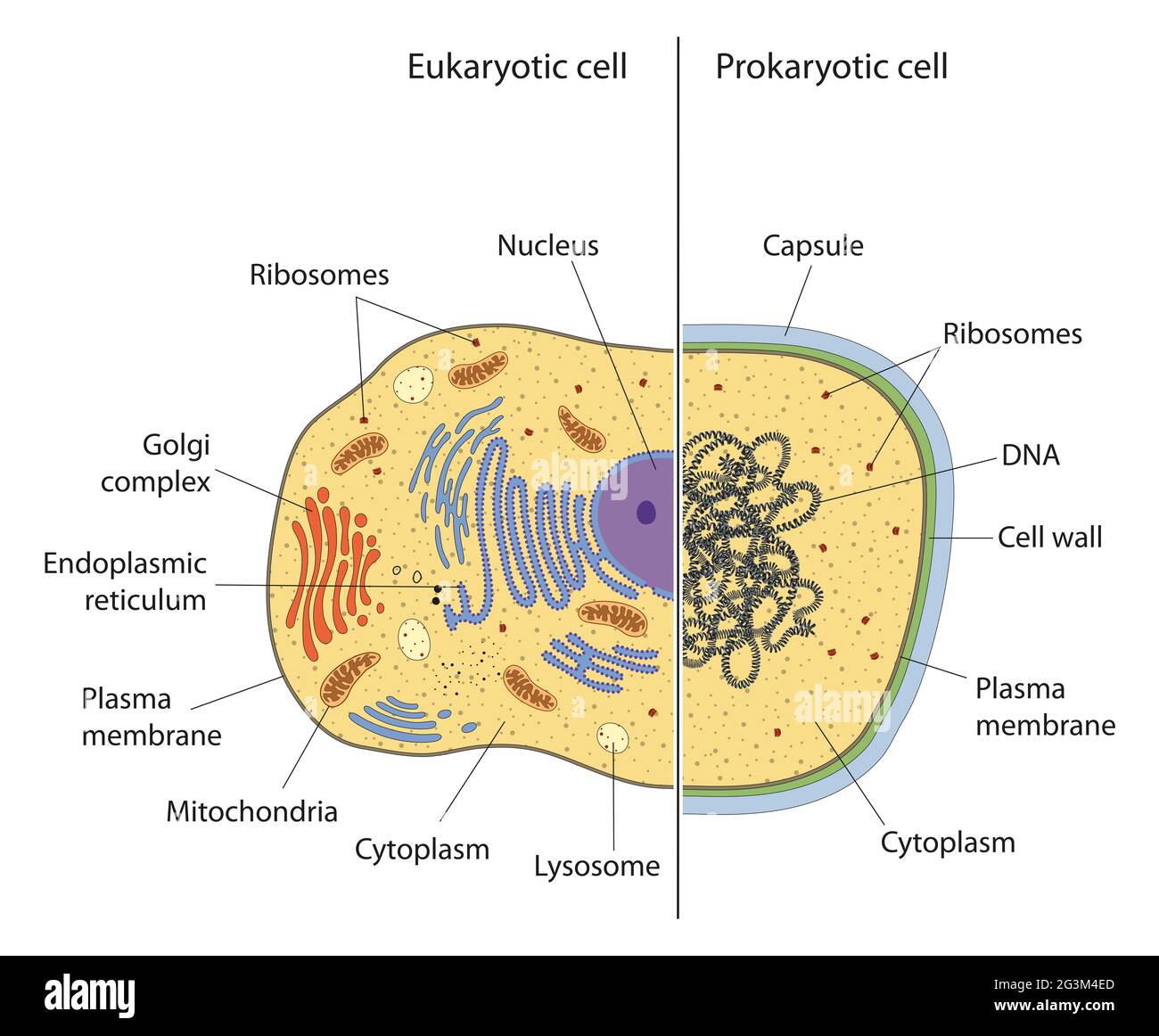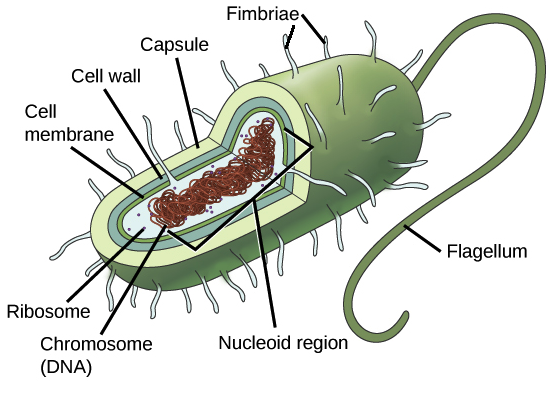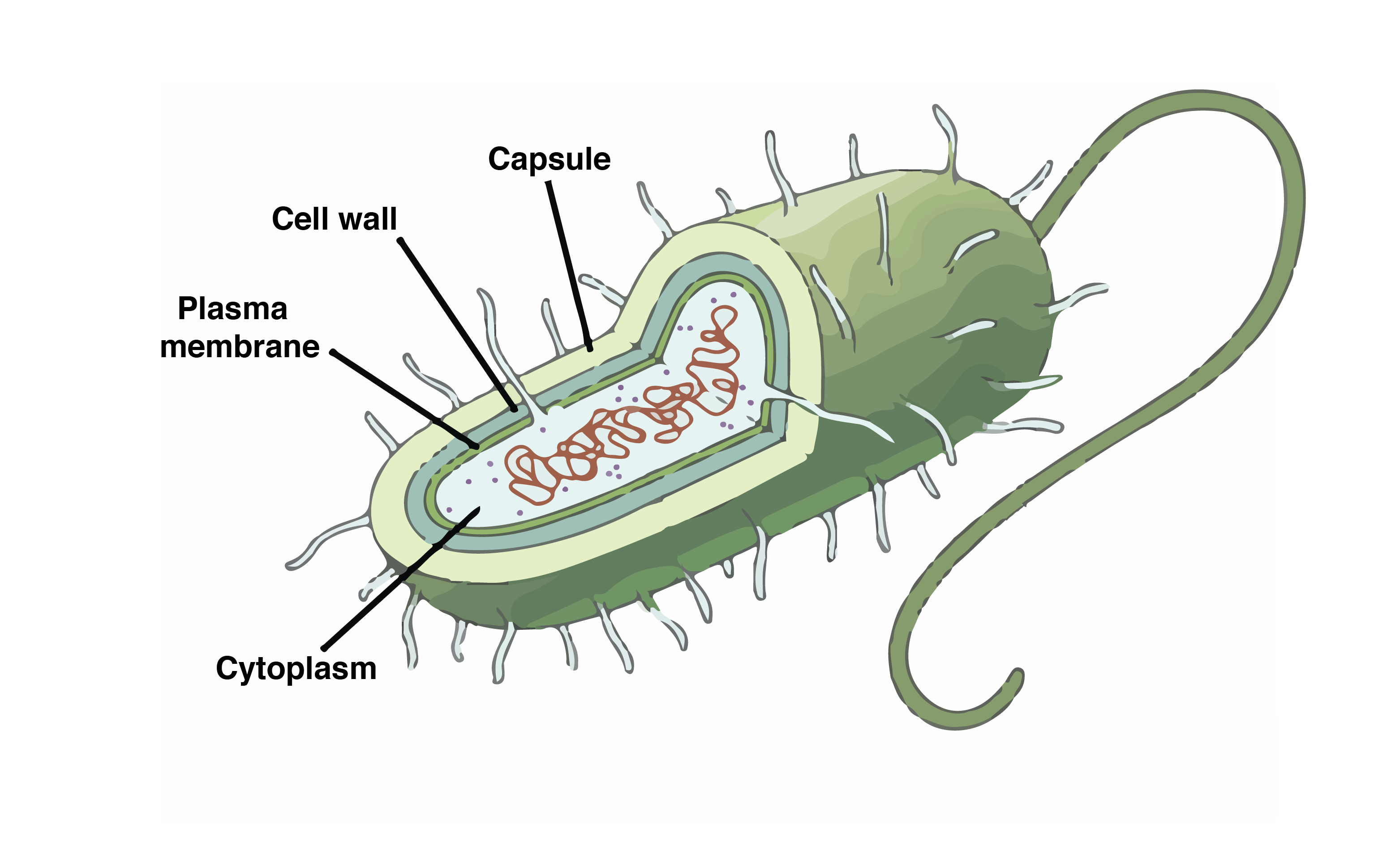The photosynthetic cyanobacteria are thought to have been responsible for the production of the molecular oxygen O 2 that began to accumulate in the atmosphere about 24 billion years ago. The eukaryotes true nucleus.

3 3 Unique Characteristics Of Prokaryotic Cells Microbiology Canadian Edition
Cell Structure Inter Lesson.

WHERE PROKARYOTIC CELLS APPEARED ON EARTH. Prokaryotic cells make up the organisms found in the two. The endosymbiont in this case was a photosynthetic bacterium which first appeared on Earth about 28 billion years ago. The theory holds that mitochondria plastids such as chloroplasts and possibly other organelles of eukaryotic cells are descended from formerly free-living prokaryotes more closely related to bacteria than archaea taken one.
Symbiogenesis endosymbiotic theory or serial endosymbiotic theory is the leading evolutionary theory of the origin of eukaryotic cells from prokaryotic organisms. Mitochondria are found in both prokaryotes and eukaryotes Mitochondria have their own DNA Mitochondria are. The Earth is approximately 45 billion years old.
The Earth and its moon are thought to be about 454 billion years old. Eukaryotic cells are more complex than prokaryotes and the DNA is linear and found within a nucleus. Although prokaryotic cells appear far less advanced than eukaryotic cells prokaryotic organisms outperform eukaryotes in many ways.
Prokaryotes have been on Earth since long before multicellular life appeared. The first eukaryotic cell did not appear until 25 billion years ago approximately. The cell nucleus where eukaryotes store the majority of their DNA was.
Eukaryotic cells are much larger and more complex than prokaryotes and contain several cell. Eukaryotes may be unicellular or multicellular and include plants animals fungi and protists are all made up of eukaryotic cells. Is Plate Tectonics Needed To Evolve Technological Species On Exoplas Sciencedirect.
Normally they refer to eukaryotic cells that is those that have a nucleus separated by a cellular membrane where they contain the genetic material. The nucleus containing the genetic information of the cell the mitochondria site of cellular respiration or the chloroplast site of photosynthesis in plants. Prokaryotes have been on Earth since long before multicellular life appeared.
All cells on Earth can be divided into two types. The cell of eukaryotic organisms animals plants fungi differs from that of prokaryotic organisms Archaea and Bacteria by the presence of several specialized organelles such as. A prokaryotic cell is one of the two types of cells that make up all the trillions of organisms that live on Earth the other type being eukaryotic cells.
Virtually all the life we see each day including plants and animals belongs to the third domain Eukaryota. This estimate is based on evidence from radiometric dating of meteorite material together with other substrate material from Earth and the moon. They are called prokaryotes.
Constituents of eukaryotic chromatin include proteins called histones and RNA in addition to the DNA. They are both similar and different in many ways for example prokaryotes are only a few micrometres in size whereas eukaryotes are between 5-100 micrometres and nearly 10000 times the volume of that of a prokaryote. Indeed eukaryotic cells are thought to be the descendants of ancient prokaryotic.
The Hybrid Nature Of Eukaryota And A Consilient View Life On Earth. They are thought to have appeared on Earth first. Figure 2-15 have cells with membranebound nuclei containing chromosomes composed of chromatin.
Indeed eukaryotic cells are thought to be the descendants of ancient prokaryotic. The Hybrid Nature Of Eukaryota And A Consilient View Life On Earth. A CELL o A cell is the smallest unit capable of performing the functions of life o There are TWO types of cells Prokaryotic cells and Eukaryotic cells o Prokaryotic cells are much smaller and simpler most are less than 1µm in diameter.
Some nonhistone proteins are found associated with both prokaryotic DNA and eukaryotic chromosomes. For most of its existence Earth was dominated by prokaryotic organisms. Prokaryotes are always unicellular organisms and may be bacteria or archaea.
O Examples of prokaryotes are Bacteria 3. Prokaryotes were the first forms of life on Earth and they existed for billions of years before plants and animals appeared. Life first appeared 35 billion years ago with prokaryotic cells.
Eukaryotes and prokaryotes There are only two types of cell in the world these are eukaryotic and prokaryotic cells. Unlike prokaryotic cells which are simpler and appeared about 3700 million years ago on Earth eukaryotic cells are much more complex larger and of more recent appearance. Prokaryotes appeared on earth before eukaryotes Prokaryotes have circular pieces of DNA within their nuclei Prokaryotes contain ribosomes Some prokaryotes are photosynthetic Which of the following statements about mitochondria is correct.
Prokaryotes recycle nutrients essential substances such as carbon and nitrogenand they drive the evolution of new ecosystems some of which are natural and others man-made. Prokaryotes recycle nutrients essential substances such as carbon and nitrogenand they drive the evolution of new ecosystems some of which are natural and others man-made. India 2 Billion Year Old Fossils Of Earth S Earliest Life Form Discovered.

What Is A Prokaryotic Cell Concept Updated 2021 Parts And Function

Prokaryotic Cells Facts All You Need To Know Coolaboo Education Site

What S The Difference Between Prokaryotic And Eukaryotic Cells Howstuffworks

Prokaryotic Cell High Resolution Stock Photography And Images Alamy
Ib Biology Notes Prokaryotic Cells Prokaryote Cell Biology

Prokaryotic Cell Dontneednonucl1 Twitter

Prokaryotes And Eukaryotes Biology For Non Majors I

Prokaryotic Cell Definition Examples Structure Biology Dictionary

Biology 101 Cells Prokaryotic Cell Eukaryotic Cell Prokaryotic Cell Model
Prokaryotic Eukaryotic Cells Cell Structure Quizizz

Prokaryotic Cells Article Cells Khan Academy

Prokaryotic Cell Definition Examples Structure Biology Dictionary

Prokaryote Structure Article Khan Academy

Prokaryotic Cell Structure And Function And Cells Prokaryotic Cell Cell Structure Bacterial Cell Structure

Learn About Prokaryotic Cells Prokaryotes Bacteria And Archaeans Prokaryotic Cell Cell Organelles Prokaryotes

Prokaryotic Cell And Eukaryotic Cell

Prokaryotic Cell Structure Functions Feature



